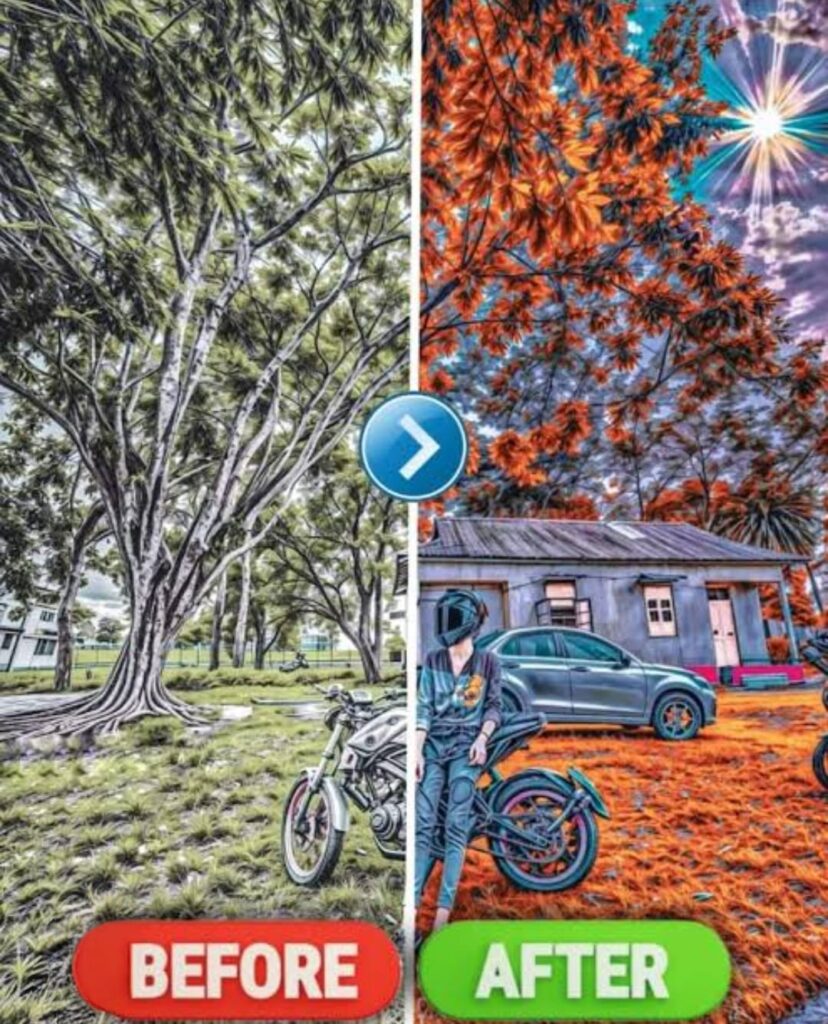Unlocking Unprecedented Detail: The World of 16K Photo Editing Presets
In the rapidly evolving landscape of digital imagery, where visual fidelity is paramount, photographers and content creators are constantly pushing the boundaries of resolution and detail. With the advent of cameras capable of capturing truly massive files, the term “16K photo editing presets” has begun to emerge, sparking curiosity and raising questions about their true nature and application. While 16K as a display resolution for consumer monitors is still a niche, the concept of “16K photo editing presets” refers to a specific approach to processing ultra-high-resolution images, ensuring that every pixel of detail is preserved and enhanced.
What Does “16K Photo Editing Presets” Really Mean?
It’s important to clarify that “16K presets” don’t necessarily imply that the preset itself is 16K. Rather, the term signifies presets that are specifically designed and optimized for use on images with extremely high pixel counts – images that, when viewed at their native resolution, would be equivalent to or approach 16,000 pixels on their longest side. This is a significant leap from the more common 4K or even 8K images.
The core idea behind these presets is to:
- Preserve Detail: Standard presets, while effective for typical resolutions, can sometimes lead to a loss of fine detail or introduce artifacts when applied to ultra-high-resolution files. 16K presets are meticulously crafted to ensure that the sharpness, clarity, and intricate textures present in the original 16K (or near-16K) capture are maintained and even accentuated.
- Handle Large File Sizes: Editing massive files demands a different approach. These presets are often built with adjustments that are less prone to causing performance bottlenecks or rendering issues on high-resolution images, allowing for a smoother workflow.
- Optimize for Large Displays and Prints: As display technologies advance and the demand for large-format prints increases, the ability to deliver truly crisp and detailed images becomes crucial. 16K presets aim to produce results that shine on these demanding platforms.

How Do They Differ from Standard Presets?
The distinction lies in the underlying adjustments and the philosophy behind their creation:
- Subtlety and Precision: Standard presets often apply broader strokes of adjustment. For 16K images, these broad strokes can sometimes be too aggressive, leading to over-sharpening, posterization, or an unnatural look when viewed up close. 16K presets tend to be more subtle and precise in their application of adjustments like sharpening, noise reduction, and clarity, ensuring that enhancements are made without degrading the image quality.
- Targeted Adjustments: They may incorporate more advanced masking or localized adjustments to selectively enhance specific areas without affecting the entire image, which is particularly useful for preserving intricate details in complex high-resolution scenes.
- Color Science Nuances: While all presets deal with color, 16K optimized presets often have a more refined approach to color grading, ensuring accurate color reproduction and smooth tonal transitions across a vast spectrum of pixels. This prevents banding or color shifts that can become apparent in high-resolution images.
- Hardware Considerations: While the presets themselves are software instructions, their effective use on 16K images implicitly demands high-performance hardware. Standard presets might work adequately on mid-range systems, but 16K editing necessitates powerful CPUs, ample RAM, dedicated GPUs, and fast storage. This hardware foundation allows the presets to perform their calculations efficiently without lagging the system or crashing the editing software.
The Underlying Technology and Hardware Requirements
To truly leverage the potential of 16K photo editing presets, a robust hardware and software setup is indispensable.
- Powerful Processor (CPU): A multi-core processor (e.g., Intel Core i7/i9, AMD Ryzen 7/9) with high clock speeds is crucial for handling the immense computational demands of processing 16K images.
- Ample RAM: 32GB of RAM is often considered a minimum for comfortable 16K editing, with 64GB or even more being ideal for complex projects or batch processing.
- Dedicated Graphics Card (GPU): A high-end GPU (e.g., NVIDIA GeForce RTX 30 series/40 series, AMD Radeon RX 6000 series/7000 series) with substantial VRAM (8GB or more) is vital for accelerating image rendering, applying complex filters, and working with GPU-intensive adjustments within editing software.
- Fast Storage: SSDs (Solid State Drives) are a must, ideally NVMe SSDs, for both the operating system and for storing and accessing large image files. Traditional HDDs will simply be too slow.
- High-Resolution Monitor: While not directly impacting the preset’s function, a high-resolution (4K or higher) and color-accurate monitor is essential to truly appreciate the detail that 16K presets aim to preserve.

Software Compatibility and Creation
Most “16K photo editing presets” are designed for industry-standard photo editing software like:
- Adobe Lightroom: Its non-destructive editing workflow and preset capabilities make it a popular choice.
- Adobe Photoshop: For more intricate retouching and composite work, often in conjunction with Camera Raw for initial adjustments.
- Capture One: Known for its excellent RAW processing engine and precise color handling.
Creating such presets requires a deep understanding of image processing and an eye for minute details. Photographers and editors specializing in ultra-high-resolution work often develop their own custom presets after extensive testing and refinement on 16K-level images. These presets are often built from scratch, taking into account the unique challenges and opportunities presented by such large files.
Who Benefits from 16K Photo Editing Presets?
While not for every casual photographer, these presets are particularly beneficial for:
- Professional Photographers: Especially those in landscape, architectural, product, or fine art photography where extreme detail is critical.
- Large-Format Printing: Artists and businesses requiring images for billboards, murals, or gallery-quality prints.
- Archival Photography: Preserving historical documents or artworks with maximum fidelity.
- Scientific and Medical Imaging: Where precise detail and clarity are paramount for analysis.
- High-End Commercial Photography: Brands that demand impeccable visual quality for their marketing materials.
The Future of High-Resolution Editing
As camera technology continues to advance, pushing resolutions even higher, the demand for specialized tools and workflows like 16K photo editing presets will only grow. The focus will remain on:
- Efficiency: Streamlining the editing process for increasingly massive files.
- Intelligent Automation: Leveraging AI and machine learning to make even more precise and adaptive adjustments.
- Cloud-Based Solutions: Facilitating collaborative editing and access to powerful computing resources for high-resolution projects.
In conclusion, “16K photo editing presets” represent a specialized category of presets designed to meet the rigorous demands of ultra-high-resolution imagery. They are a testament to the ongoing pursuit of visual perfection in the digital age, enabling creators to extract and enhance every intricate detail from their high-resolution captures, ultimately delivering stunning results that truly stand out. While demanding in terms of hardware, the aesthetic and technical advantages they offer are invaluable for those operating at the cutting edge of digital photography.
